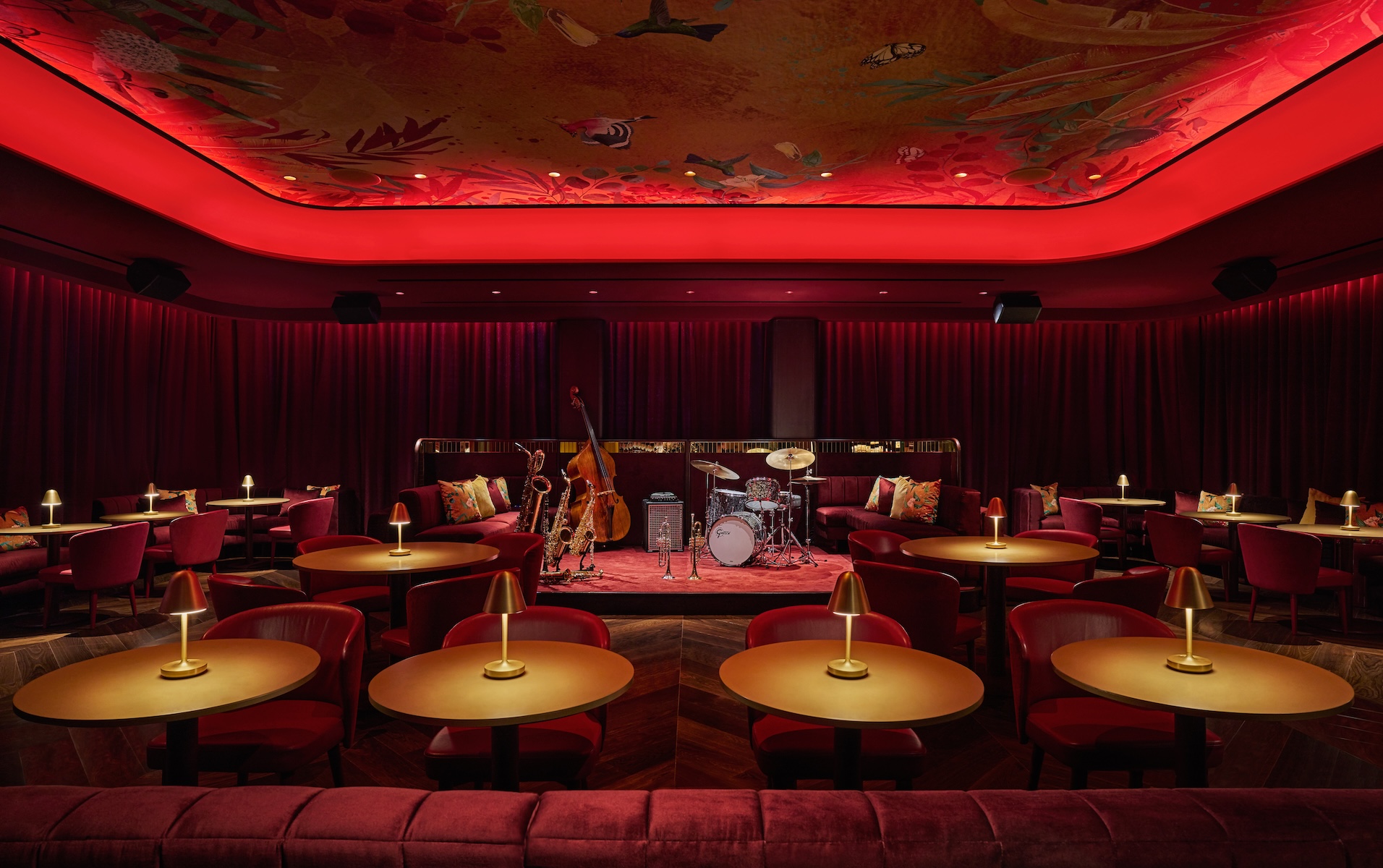F L A U N T

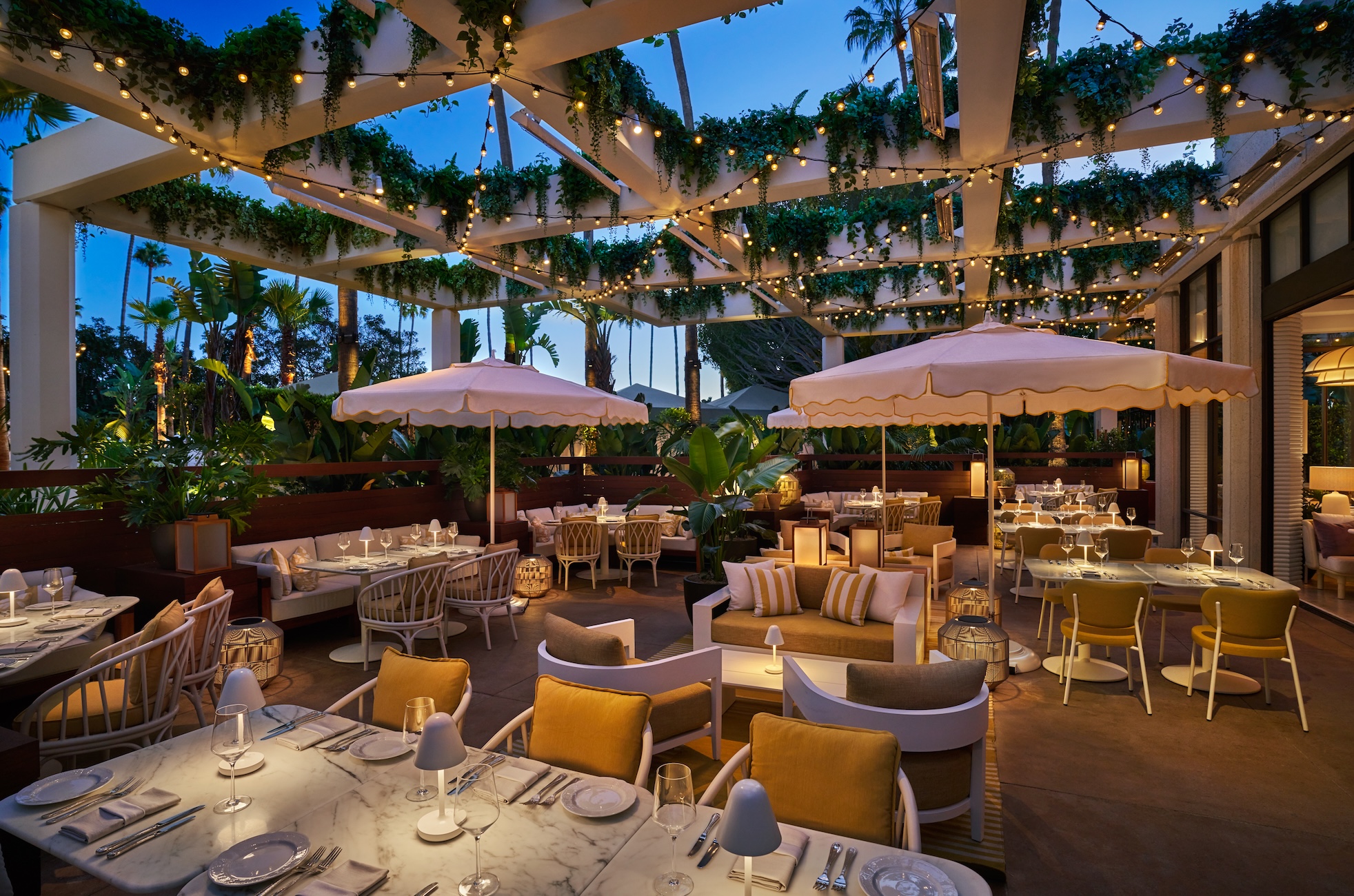
Above the steep cliffs, jagged ridges, hidden coves, and rich sandy beaches of Southern California’s coast, towers the Pendry Newport Beach. Founded by father-son hoteliers Alan (CEO of Montage International) and Michael Fuerstman, titans of luxury hospitality estates around the Americas, the Pendry Newport Beach is a five-star stay with a particularly exciting, unique addition: the first-ever Elwood Club, a private members club that’s revamping Newport’s social scene.
Membership director Keith Du Ross explains that the club is named after Elwood Fuerstman, Alan’s father, who had a reputation for throwing fabulous dinner parties. The “secret” to these dinner parties was that each guest would be totally different from one another, but have enough in common to enjoy an engaging conversation. The goal for the Elwood Club, then, is for each of its members to offer something different, something exciting, where adventure and newness can reside in the comfort of this beachside town, whether members have lived in the area for generations or if they’re newcomers.
The first of its kind and with plans to expand to other cities across the US, the Elwood Club allows members access to Viamara–a fine-dining space that builds its menu off Italian classics with a fresh, Southern California flair–a casual pub, a cabaret-style entertainment area, and access to the hotel’s spa, pool, and gym. The Elwood Club’s programming is constantly changing, whether it be performances in the cabaret, game nights, themed parties, chef takeovers, floral arrangement or cooking classes, and more.
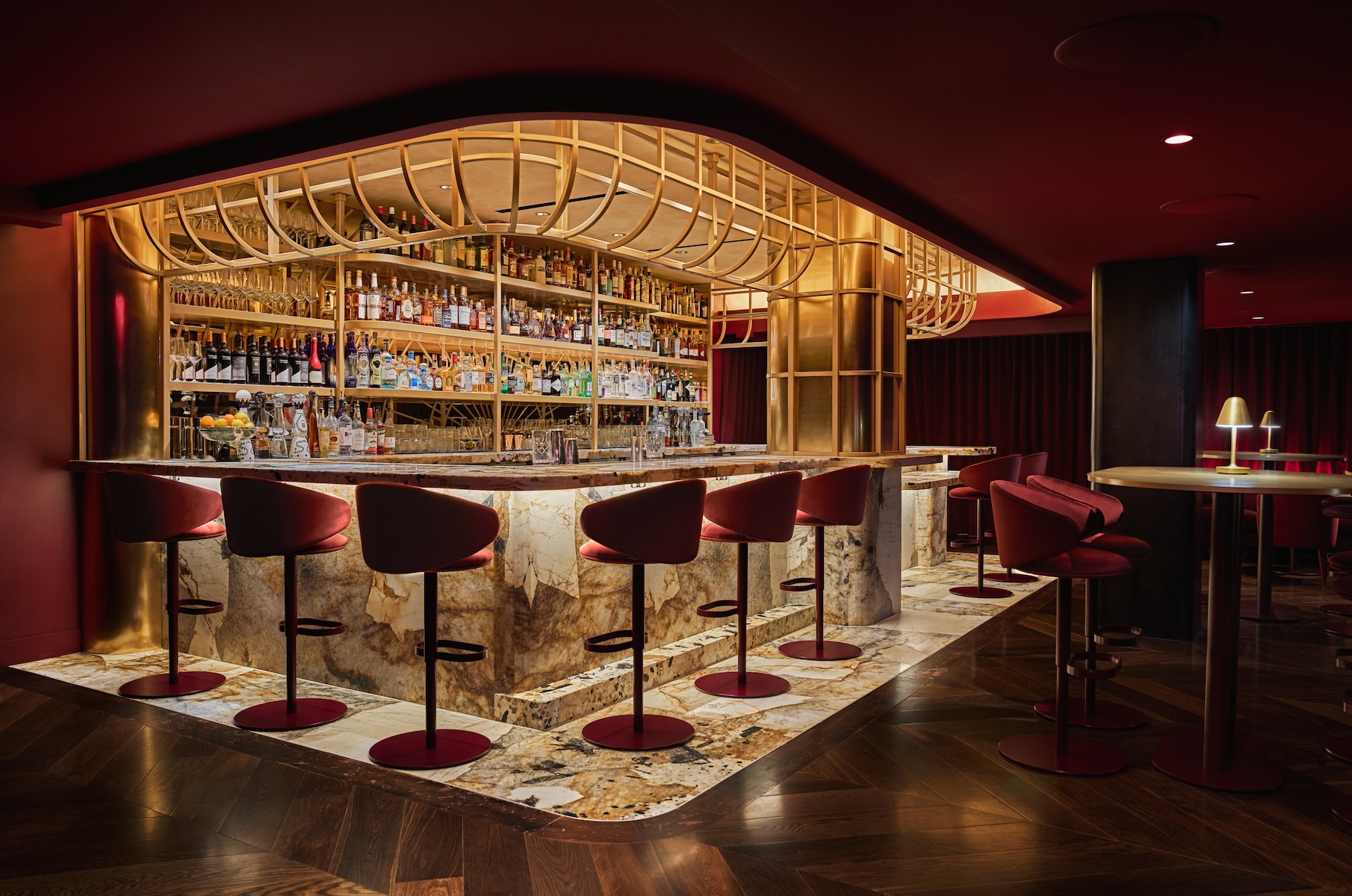
Chef Ben Martinek is no stranger to the Montage family. Having graduated from A Le Cordon Bleu, he spent more than 10 years working at Montage Laguna Beach and their fine-dining restaurant, Studio. He is now the Executive Chef and Culinary Director for Pendry Newport and The Elwood Club.
Keith Du Ross is from the East Coast and has spent over 20 years working in marketing, public relations, and luxury spaces. Du Ross cut his teeth in LA at institutions like the Four Seasons, SoHo House, and Chateau Marmont alongside celebrity florists Eric Buterbaugh and Jeff Leatham, going on to work in perfumery and with fashion houses like Dior, Louis Vuitton, and Cartier. In his time working with Buterbaugh and next to some of LA’s most selective gatekeepers, he learned the very delicate ropes of what it is to be a tastemaker, and how to make a space feel truly unique. At The Elwood Club, Du Ross ensures that both guests and staff uphold the importance of Fuerstman’s dynamic dinner party vision, helping to curate spurts of energy and excitement in Newport Beach.
Below, Martinek and Du Ross share their insights on what it takes for a private member’s club to be truly meaningful for both guests and staff, explain their constitutions of service and atmospheric curation, and explain just why it is they believe in The Elwood Club.
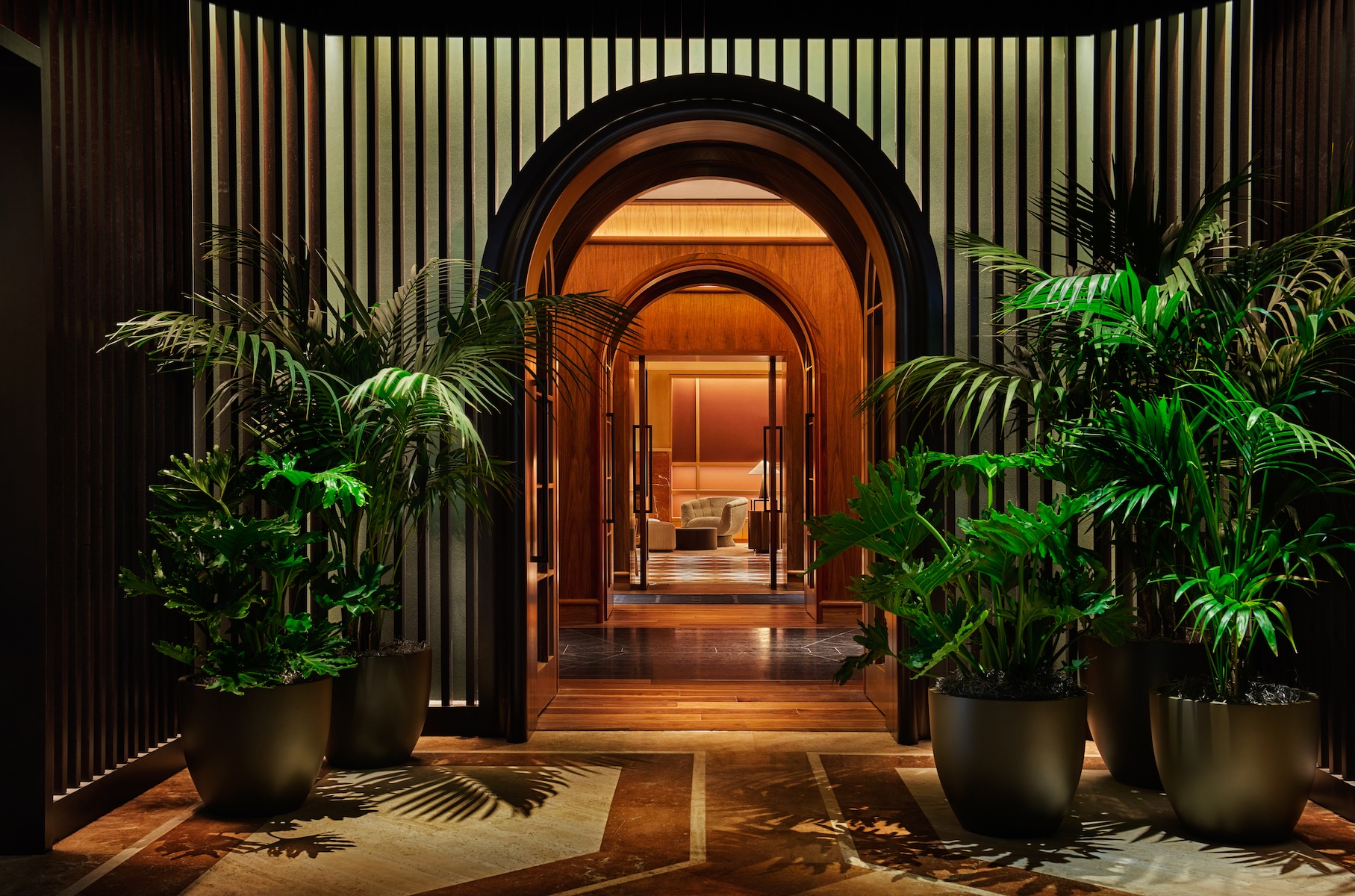
What made you decide to join the Pendry Newport team and build Viamara from the ground up?
I wanted the growth, but I didn't want to relocate my family. And I love working with Montage International. It's a great values-based company, and I love the people. I didn't want to leave the company, so I had Newport on my radar for a couple of years, [and] as we announced that we were going to build the hotel, I always thought that that would be a great option for me, because I didn't need to relocate my family. We're very happy here in Southern California, and I can't think of a better place in the world to be a chef than in Southern California. So many beautiful things, so many different wonderful assets available to us as chefs here. So it was great. Didn't have to relocate, was still able to stay with the same company, and grow and be able to build a brand new team up here.
In these past few years since the hotel’s opening, have you learned anything about yourself or yourself as a chef and culinary director?
I'm sure I've learned so much about myself, but I really love being there for people, too. Obviously, as chefs, we're passionate about food and we're passionate about making the guests happy, but there's much more to it than that, especially when you lead such a large team.
My team here is about 60 people, and coming from a restaurant background, it's rare to have a team that was larger than about 15 to 20 people. Being able to lead such a large team and work with so many different personalities really has grown on me. I've felt myself grow substantially, getting to know so many different personalities and how to work with them, and helping them navigate difficult times. So, you know, as a leader, I have grown tremendously in the last two years.
Do you have any rules, traditions, or expectations in your kitchen that you feel are unique?
Yes. I think they're unique to this company, maybe not necessarily to the other kitchens in this company, because we all kind of live by the same values. The things I always preach in my kitchens are patience—not to rush anything, especially when it comes to personal growth. You need to allow yourself the time that it takes to get where you want to go, and setting realistic goals and timelines attached to those is very important.
I always try to bring balance to my kitchens, and that's balance of professionalism, getting the job done, making sure we have happy guests, but the other side of that is making sure we're enjoying ourselves and enjoying what we're doing. Coming up in some fine dining kitchens in my past, I worked with some chefs where that culture just wasn't there, and it was all about perfection, and anything short of that was failure. I don't really see it that way. Perfection is still the goal, but we learn from our mistakes, and we're very solution-oriented, rather than focusing on the mistake itself, on “How do we move forward and make sure that it doesn't happen again?” We take it seriously, but we don't take it overly serious to where we're not enjoying ourselves and [enjoying] what we're doing and appreciating the company that we have and the culture that we've built.
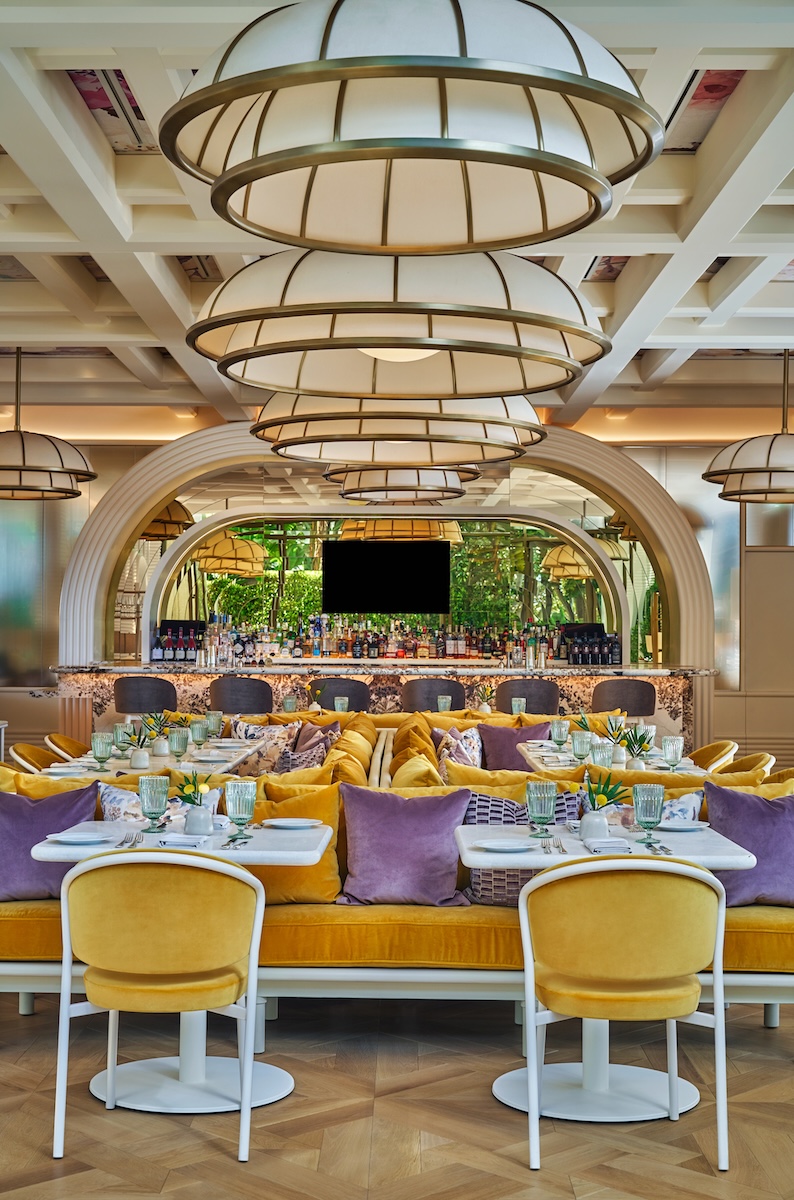
You recently launched a new menu with Viamara—is there any particular dish that you're most proud of or excited to share with guests?
We've changed it up quite a few times—it’s very seasonal—but now that we’ve been operating for nearly two years, we decided to bring back a lot of the classics. Our Cacio e Pepe, some of our most popular pizzas, and the spicy bucatini—these were guest favorites from day one.
A few signature dishes have remained, like our Branzino, which has been on the menu since day one as well. With the addition of that, we were able to add a full raw bar to the dining room, which for me was the most exciting component to the new menu. That let us create what we call our crudo e freddo section—a cold, raw section on the menu focused on crudos, oysters, carpaccios, and other raw seafood dishes. That was the most exciting part for me, because we were able to do that by adding a station in the dining room, because we just didn’t have the space or capacity to do it out of the kitchen.
How do you find a balance between creating Italian classics–how do you create grandma’s pasta with local, California freshness?
Everything that we do in Viamara, of course, is in the box of an Italian concept, but through the lens of a Southern California restaurant. So we try to embrace as much local produce and seafood as possible. Some of our pastas are very, very classic. Cacio e Pepe is essentially four ingredients, and there's not a whole lot you really want to do with that—it's kind of perfect as is. But then on the other side of that— our pizzas, for example—we like to run different pizzas that have farmers market vegetables on top of it, and the flour that goes into the pizza is carefully sourced from a little artisan mill up in Pasadena. So we're using only fresh whole grain flour that goes into the pizza dough.
For me, personally, it's about the flavor of the pizza—because the flavor is tremendous with this flour, but also the whole grain adds all the nutrients back into it, rather than a bleached all-purpose flour or bread flour that you find on the grocery store shelf. That is the big difference between Italian food in Italy and Italian food in the US. We have so many overprocessed ingredients that go into our foods here, whereas in Italy, it's a little mill around the corner that's milling the flour. So that's what we tried to recreate here with some of those staple ingredients.
Our options are almost limitless when it comes to the produce and seafood that we're able to use. We’re rotating through certain items seasonally, staying in very close contact with the local farmers' markets and the farmers that provide to those markets. And we work closely with the Ecology Center down in San Juan Capistrano, just to know what's always fresh and beautiful and in season.
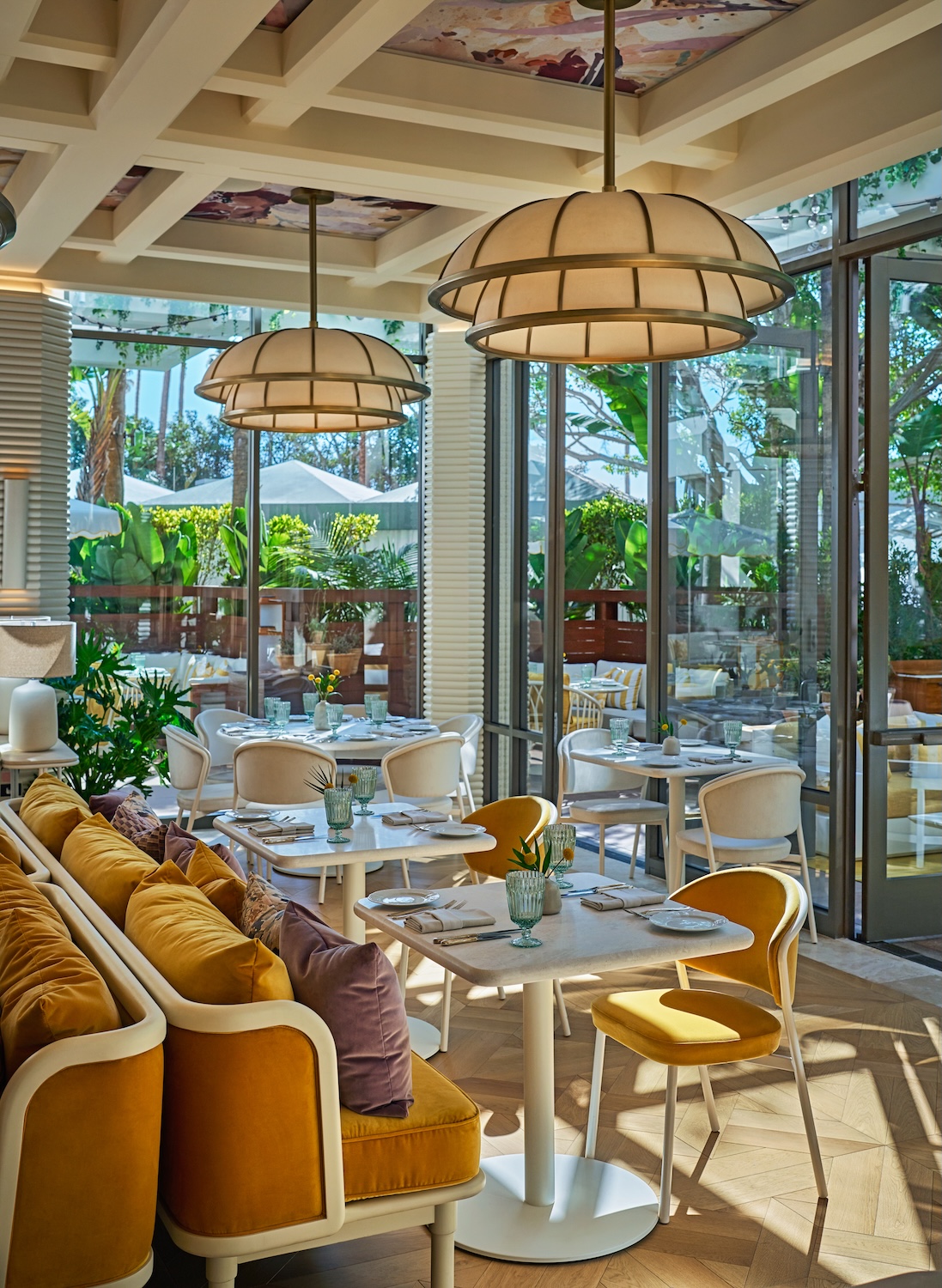
What are the differences that you see between creating a menu for a more public restaurant versus for a private members club? What goes into consideration when you're making a menu or a space, or a taste feel more elevated?
There is a really big difference in how we treat a public-facing restaurant compared to a members-only restaurant, in the sense that we build much deeper relationships with these members. For the majority of the members, we’re on a first-name basis. We know their family members, we know their dietary preferences, we know their likes and dislikes and their favorite cocktails and how strong they like their cocktails, and we keep very detailed notes on their preferences. So as we get to know them, their input becomes valuable when we're writing our menus. We're not going to put a duck on the menu if none of our members want duck. It’s not just to appease ourselves, it's very much to appease them, so they, without even knowing it, have a lot of impact on what we do.
Members can come into a place where everybody knows their name, and the drink and an appetizer hits the table before they've even opened the menu, and we know they're going to love it, because it's something that they've enjoyed many times in the past. We always try to keep options on the menu for them to experiment with new things. I think that's the balance that we've struck in there. We rotate pizzas once a week, so there's always something new and fresh for people to try. Then we also have a secret members’ menu that is outside of the Italian concept, it's really comfort-driven food. We have a stroganoff there, and we have a poké bowl and some sushi rolls…if certain members don't want to eat pasta five times a week, they'll always have something that's comforting outside of that.
What’s the idea behind inviting another chef to come and do a restaurant takeover?
To build excitement and be able to offer something unique that nobody else is doing in the area. This year, I focused on different regional cuisines. Our very first pop-up of the year was Vietnamese. Then we had an Indian pop up with my good friend named Chef Rupam. This next is with a chef that I know from Punta Mita, Mexico, Héctor Leyva. He's going to do a takeover in the theme of his restaurant called Zicatela. It’s authentic, elevated Mexican cuisine, so it really fits the nature of what we're doing, just with a completely different flavor profile.
I do have a Thai pop up that's coming up later in the fall. I have a pop up with a couple friends of mine, one of which is 6100 Bread over near Costa Mesa. They have a fine dining concept called Restaurant Idea, and they're going to take over in August. I worked with these gentlemen for many years in the past at Studio, and so it's really nice for us all to come back together and be able to do something fun.
It's a win-win for everybody. It's great for us as the culinarians to be able to do something new, exciting and fresh and learn from other chefs that come into our space, but also for our members, some of whom are here four or five times a week to have something that is completely different. Even dishes that I myself might not know how to prepare because it's just that far outside of my wheelhouse.
Food is a universal constant for humanity. It's a way that we create community and spend time with one another. You've been working in restaurants since you were 11, but over the years, in your time, professionally and personally working with food, what is the constant meaning in it for you? What does food mean for you in your life?
When I first started in restaurants, I was 11, but I was picking up cigarette butts and breaking down boxes, that type of thing. I did a little bar backing for a while, and I even served tables at the same restaurant I was at for about six years. My last stop was in the kitchen. I really didn't move into the kitchen until I was about 16 years old, and I remember making my very first pizza that I felt was perfect, and it was a to-go pizza. I put it in the box, I happened to know who it was going to and I remember this feeling of when I closed the lid to that box, how happy she was going to be when she opened it up and saw that perfect pizza. That's the dragon that I've been chasing ever since, because there's that real big sense of satisfaction that comes from making others happy and enriching their lives a little bit, even if it's through something as simple as a pepperoni pizza.
It has evolved a lot, but that is still my driving factor. I went from a 16-year-old in a kitchen with maybe two other people in that kitchen to a team of 60 people. Now it goes well beyond just the guests. It's about enriching the lives of the people that work with me and for me, and there's so many of them, and from so many walks of life that cooking has become such a small part of being a chef in my life. It's about building the teams and building up the people that actually do the hard work on the line, and making sure that they're growing in their careers, and that they're happy with fulfilling their passions.
It's not just about the guests. It's about creating a happy work environment. I always say that if my number one priority isn't making sure we have happy guests and sending out wonderful food, my number one priority is making sure we hire the right people. Number two priority is making sure that we treat them the right way. Then the number three priority is making sure they have all the tools and products to do their jobs well, and that we're teaching them on a daily basis. If I can nail those three things, then I don't really need to worry as much about great food. It's going to happen naturally, because I have the right people in the right places with the right products and the right mindset to do the job.
You build a camaraderie with these people, and they move on with their lives, and you move on with your life, but that camaraderie sticks with you. These people are still important factors in your life, decades outside of the restaurant you worked in. So it’s pretty amazing.
How do you cook for yourself when you're alone?
I just want a bowl of cereal sometimes, but I love getting creative with leftovers and turning something that was one thing, into something completely new. I love spicy food, so I make myself spicy meals, with lots of textures, lots of acidity. I take a lot more risks when I'm cooking for myself, because that's the time to make mistakes–if I'm going to make a mistake, I'm going to do it for myself, and hopefully learn from that and take something functional back to the kitchen space.
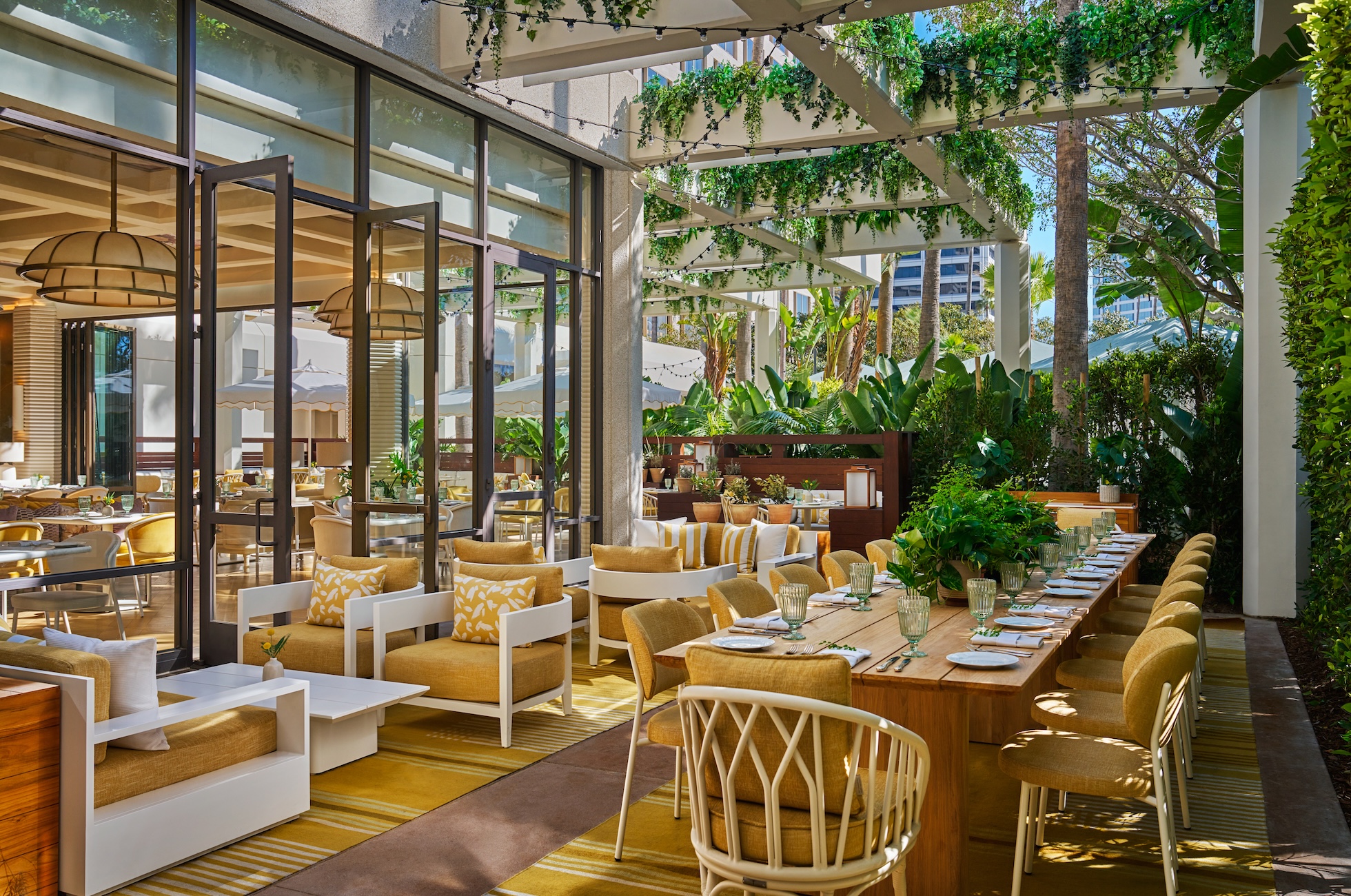
How did you arrive as the membership director at The Elwood Club? What sparked your interest in this role, and what exactly does it entail?
In Los Angeles, I always dealt with luxury hospitality, from Auberge to Aman to the Four Seasons. My husband was down here, and I didn’t really know much about the area. I think I was selected [as Membership Director] because it had to be somebody who wasn't from down here; it had to be someone new to the scene. I loved the idea of a tribute to Elwood Fuerstman, and as Alan explained his dad's idea of a dinner party, the environment had to be there, the food had to be there, but it was all about these characters that you’d put around a dinner table.
After COVID, the social club started popping up. We weren't even going to be the first or the last, so we were competing against five to seven other social clubs. What would be our secret sauce and our differentiating factor is by actively seeking out a textured pepper mix of all walks of life.
What we did right away is…[when] this entire place was under construction, we started doing hard hat tours. I'm like, ‘No Chanel, no open-toed shoes, people in jeans, work boots, and we're going to wear yellow vests, hard hats, and we're going to go through the construction zone.’ So already that lets people be a little bit more loose.
I'd start leading these tours, and when the construction guys saw me on a tour, they would stop what they were doing and start holding back plastic [drapes], opening the doors, letting people know about exposed wires. That was my first cue to start watching: ‘Are they making eye contact? Are they saying thank you? Are they acknowledging that these people are stopping what they're doing and making sure that they're clearing the way for them?’
What we knew right away is, how these people were treating these construction workers was typically indicative of how they're going to treat our staff. And no one messes with our staff, because we've also cherry-picked them to be a part of this club.
More than 600,000 people had moved into this area around COVID. They were coming from San Francisco and Las Vegas and Texas, where they were looking for something a little bit more sophisticated. What we were promising people was a little bit of nightlife and just more options and variety. With new people in the area, mixed with a lot of the OG’s that have been down here forever, it just gave us an opportunity to introduce them to something different, new ways of thinking, and again, some sort of nightlife. We've really just tried to make sure that we have the right people. I say no more than I say yes, oftentimes.
If this is going to be the first one of its kind, the first Elwood Club, it has to be a trailblazer and different. Yes, it will be adapted to each city that it goes into. But [Alan] wasn't kidding; if we can make it down here, we can make it anywhere. So it's been really an amazing journey so far.
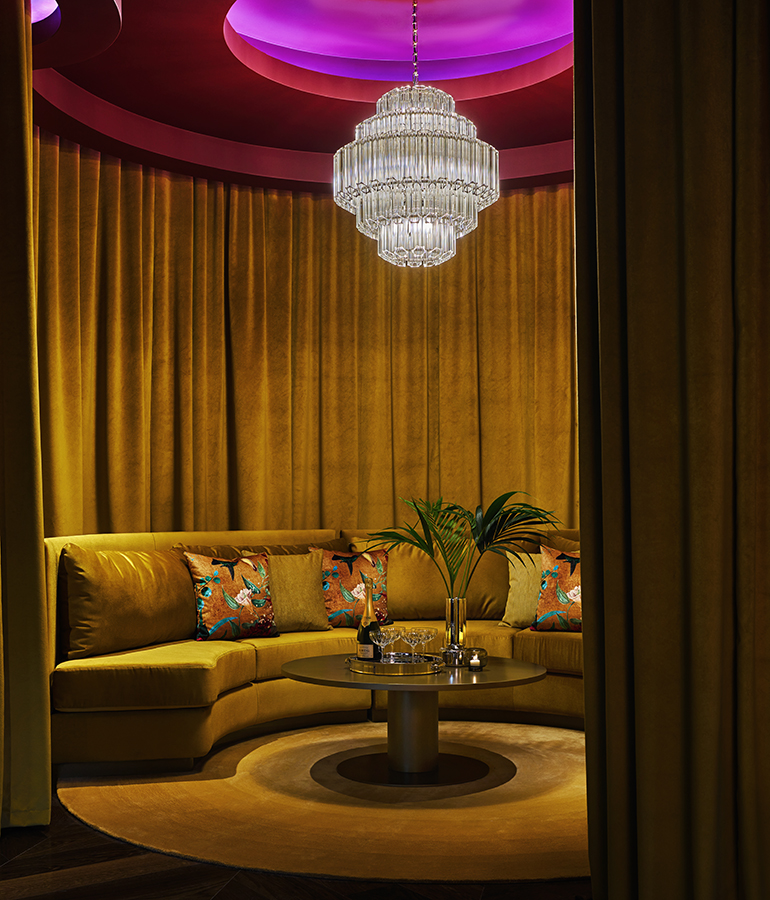
What are the expectations that you have of your staff? What do you expect them to bring to the table?
It's all of the little nuances that my team can pick up on. Yes, we know that the Ketel One extra dirty martini is what should be sitting on their table, but also, they'll know your birthday and your anniversary. They know what sorority their daughter is rushing in Alabama. I want to know what vet their dog's at, so I can send flowers. It's all these little things.
We are family. We do care. We're staying on top of those things. Getting a handwritten note with little stick figure drawings goes a long way. It's about the details and making sure that you're connected with them. So what do I expect from my team? Connectivity, being able to have a good chat, whether you're the bartender or you're the food server…all the little niceties. When members are greeted by their name, it's an expectation, but when there's a little card that's left on the front seat at valet, following up on something from a conversation that I might have had about…just someone remembering, ‘Oh, I heard your mom was sick. Oh, there's a little card that's dropped at the table.’ They're the things that really seem to resonate.
I expect my entire team to be down with that assignment. It's all picking up on the details, and we call them the surprise and delight, the wow moments. Making sure that everybody feels empowered. When someone mentions, ‘I just got this massage, I love the lotion that you're using.’ That's in the cup holder of their car with a little handwritten note when they're leaving. If it's ‘Oh, my god, the biscotti. It blows my mind.’ Next time they're there, there's biscotti, again, from Chef Ben, and a nice little card that's in a to-go bag that's dropped for them.
For me, it's rewarding. I truly believe that yes, the service has to be there, and they have to be attentive, but those little things seem to resonate.
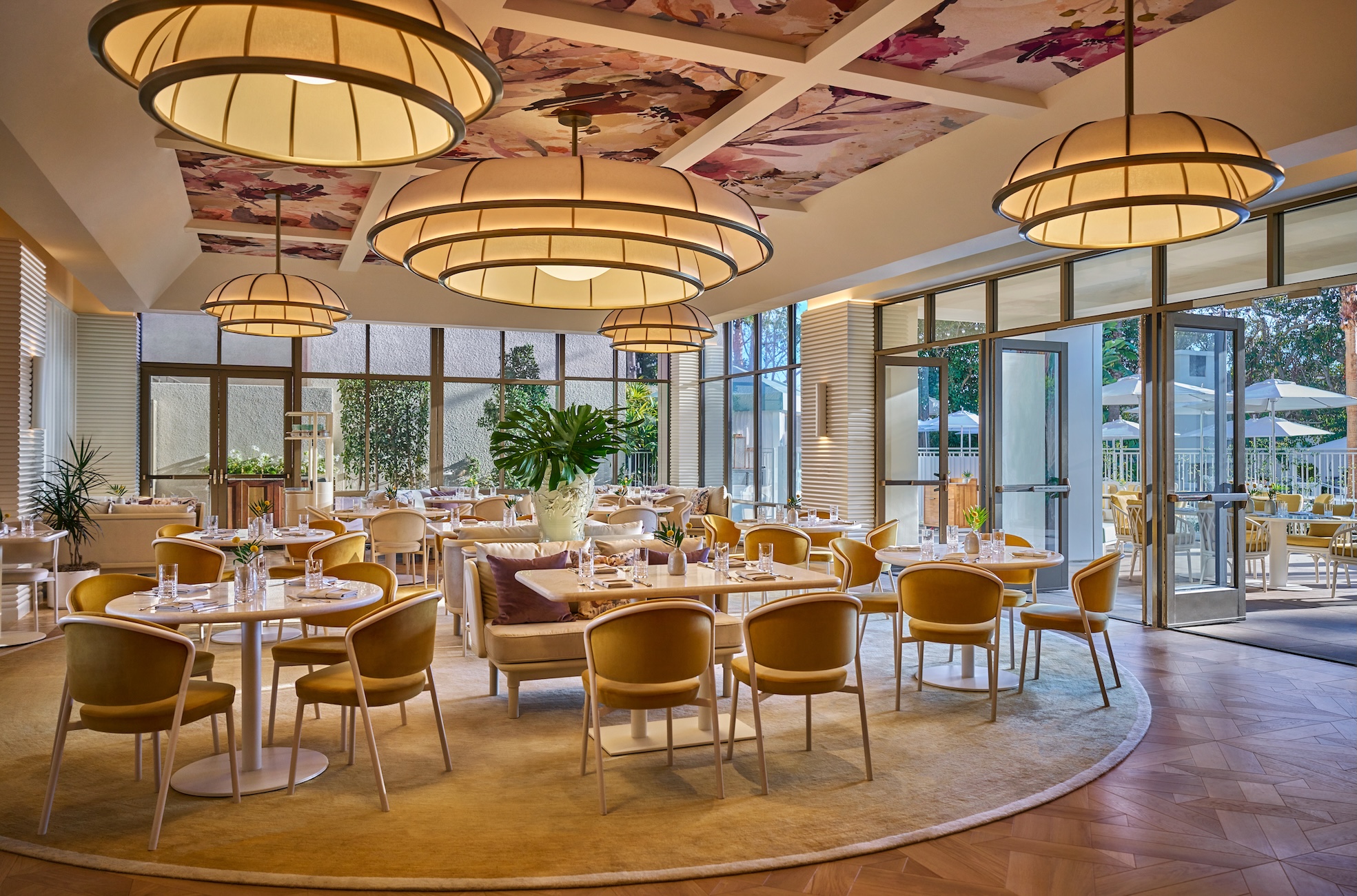
What is the importance of these clubs? What roles do they play in the members’ lives? Have you gotten any feedback from people that makes you think ‘Yes, this is all worth it.’
We have that large group of non-locals, that 600,000 group that moved into the area recently, and they're looking for a way to be connected. It's a social club, so to meet local, like-minded people. So, the best part of my job is that I get to be the membership director, but I also get to be the club Yenta. So when I'm like, ‘You guys are from San Francisco? These people are from San Francisco! Get over here!’
Right now, the membership group ranges from 21 to 92. What we've done is we have a really thorough vetting process. There are background checks, there are the tours with me, there are all these things that have been put in place, so when members actually get through here, they understand that dinner party scenario. So what happens is, when someone comments, ‘Oh, I love your bag,’ people aren't like, ‘Oh, thanks.’ They're usually like ‘Oh, thanks. I just got it at so and so.’ Usually, when people start engaging in conversation, it doesn't just stop at ‘Oh, thank you.’ It is an opening of a door to something more. And when I see that happening, or when I see some of my 21-year-olds hanging out with our 92-year-olds, that's when I'm like ‘Oh, my God, it's happening.’
People are looking for a little bit of diversity and interest, and that's where the beauty happens. These are amazing individuals, and that's what I think everybody understands. They all know that they have to come through me, this odd old gay man from West Hollywood that's been thrown down here. They all know that I insist on the extraordinary and really interesting people. And through my work with Eric [Buterbaugh] up in Los Angeles for so long, I have a good sniffer for, ‘Yeah, that doesn't seem authentic. That seems like a lot of BS. Wait, that's something different. I haven't seen that.'
Is there any exciting programming this summer that you're looking forward to?
I love to throw a good party, and there's really an amazing calendar of events. We do boozy bingo, next month, we're doing tattoo roulette, then, a seminar on working with psychedelics. There's going to be floral tutorials that I'll lead, and Chef Ben does his cooking classes.
People love a good theme party down here. So we've done westerns, and we do a white party. The big one that I've introduced that's pushing the envelope is a masquerade, which is fun because it's a little commitment: get all dolled up, everybody in a really cool mask.
Everybody got that assignment, but it was more the environment that I was responsible for curating. From half-naked people in the pool, fire dancers, S& M figures, all the naked ladies, and champagne glasses. This isn't going to be for everybody, but for all those people who move down here, or the people who have always wanted something to look forward to, this is what it is. It's not going to be for the faint of heart.
We're doing year two of the Masquerade, and everybody's like, ‘I already have my look.’ And I'm like, ‘It's not till October.’ So just having these people excited about really outdoing each other, and the women are all in bustiers and these little lace things, and again, they get the assignment. That's never the problem, but having a place where they can kind of celebrate it.
I have these moments where I look around and I'm like, ‘Yeah, I didn't expect it, oh my God!’ There are naked people in the pool, and people are cheering! The fact that it's happening in Fashion Island, right in the heart of Newport Beach, is something different, and I'm really excited about that.
